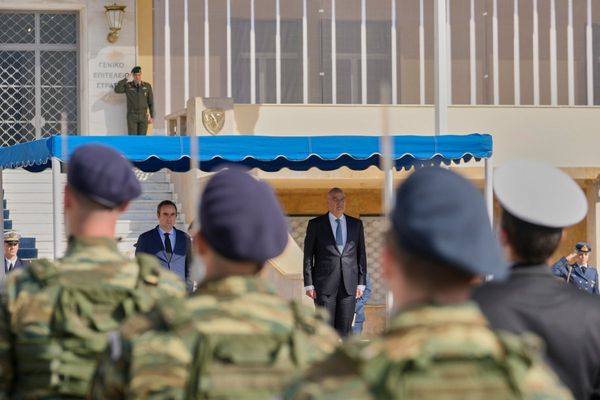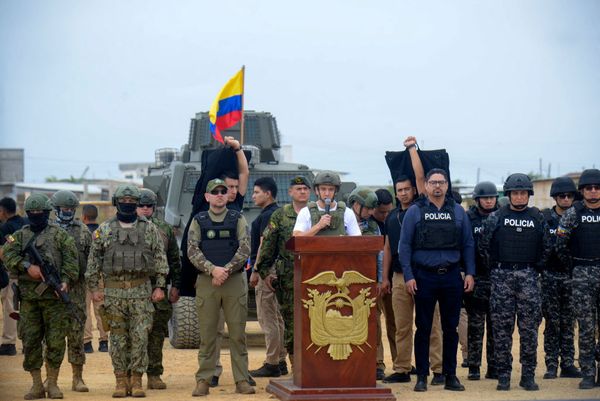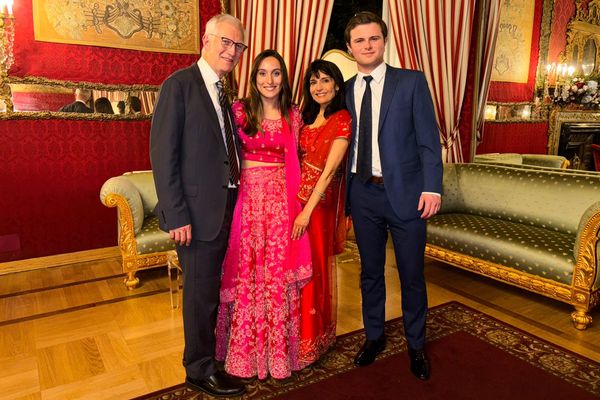
It was a question that had everyone in the room stumped, almost to the point of silence. “Who holds the record for the most league goals scored by an overseas player in the top flight of English football in a single season?”
I felt as if I should know the answer, having written about sport for the vast majority of my adult life. But I didn’t. There I was, appearing as a guest at the Brighton branch of Sporting Memories, a UK charity which encourages older people to meet and reminisce through talking about sport, and I’d seemingly been exposed as a total fraud.
A few educated guesses had been made initially by the 20 or so members who’d gathered to hear me talk about my latest book before getting down to the far more serious business of their weekly Monday morning quiz.
Thierry Henry? Cristiano Ronaldo? What about Dennis Bergkamp? Or Luis Suárez?
One by one our quizmaster, the former England rugby union international, cricketer and BBC broadcaster Alastair Hignell, batted away each incorrect answer including my own shot at restoring some professional pride (Mohamed Salah, just in case you were wondering).
Gradually, the suggestions became little more than shots in the dark. Robin van Persie? Gianfranco Zola? Not Ricky Villa, surely? Robert Pires? Until, in David Ginola’s wake, the well of potential candidates ran dry and an air of befuddlement fell across the group.
Maybe it was the presence of the former Wales and Newcastle United goalkeeper Dave Hollins in the room that did it, but out of the blue someone came up with a name, the correct name at that – George Robledo.
George Robledo! Yes, YES! … and it all came flooding back.
Some 20 or so years previously, I’d covered a Newcastle United game at St James’ Park during the managerial reign of Bobby Robson, often cited as one of the nicest guys to walk the earth, let alone work in football. The post-match press conference had ended but Robson continued talking to some of us hacks who weren’t on a deadline about his heroes, the ones he’d watched playing for Newcastle while growing up in north-east England in the years immediately after the second world war. He mentioned Jackie Milburn – I knew about him. He mentioned Joe Harvey – I knew about him, too. But then Robson said another name which meant absolutely nothing to me. That name was George Robledo.
Clocking a couple of blank expressions in our midst, Robson gave us George Robledo in a nutshell. I wasn’t taking notes, just listening intently, but this much I do recall – he’d come as a boy from Chile to Yorkshire, worked as a miner before becoming a professional footballer, and scored lots of goals for several clubs (including Newcastle’s winner against Arsenal in the 1952 FA Cup final, a picture of which painted by the 11-year-old John Lennon would later appear on the cover of the former Beatle’s 1974 solo album, Walls and Bridges). I also recollect Robson saying he saw plenty of George Robledo in Alan Shearer. Praise indeed, as anyone who remembers Shearer in his pomp would acknowledge.
On the long drive back to my home in Cardiff, I thought a lot about George. Here was someone who scored 33 league goals for Newcastle in the First Division (or the Premier League in today’s money) during the 1951-52 season. No overseas-registered, foreign-born player had reached that number before, and no overseas-registered, foreign-born player has reached that number since (although Mohamed Salah is doing his level best to change this). At the time of my visit to Brighton (January 2023) Manchester City’s Norway international Erling Haaland was on course to break George’s record, a feat Planet Football has since decreed he achieved. But then, as one extremely clued-up member of that Sporting Memories group had pointed out, Haaland was born in Leeds. As in Leeds, England, where his father once played football. Going by the rules of geography George is, as I write, still the record holder. Splitting hairs? Maybe, maybe not. It all depends how accurate, or perhaps pedantic, you want to be.
Either way, there were two undeniable truths about George Robledo. One, he had clearly been a phenomenal football player. And two, his remarkable achievements seemed to have been almost completely forgotten in his adopted country. On reaching Cardiff, I fired up my laptop to see whether a book had been written about George, partly because I wanted to read one, and partly (the greater part, admittedly) because I felt a sudden calling and fancied having a go myself.
No such book existed. So I went for it, blind at that stage to what exactly I was taking on but determined to unearth the treasure that was, and remains, George Robledo. The catch about unearthing something long hidden is that besides all the “wonderful things”, as Howard Carter described the contents of Tutankhamun’s tomb on first sight, you can also chance upon plenty of heartache. And so it would prove with George. Aged six, he and his two younger brothers had been abandoned by their father on the very day the Robledo family was due to set sail from Chile to start a new life in England. One of those brothers, Ted, who would also become a professional footballer and sign for Newcastle, was later murdered in mysterious circumstances in the Middle East, his body supposedly thrown into the Gulf from an oil tanker. There was also the brother George never knew, the result of a clandestine meeting in Hull between his mother and the father who, years before, had walked out of his life at the drop of a hat in Chile. The baby was given up by his mother and raised in a children’s home.
And yet, as befits someone who grew up surrounded by poverty and worked in a Yorkshire mine as a Bevin Boy during the second world war, George never regarded himself as a victim. As a young man his creative feats at inside forward for Barnsley turned him into a local hero and secured a transfer to Newcastle in 1949. The following year he became the first Football League player from outside the British Isles to face England in an official international, acting as Chile’s talisman when the nations met at the 1950 World Cup in Brazil. In 1951 George was the first South American to play in an FA Cup final as Newcastle defeated Blackpool 2-0 at Wembley. Twelve months later he scored the only goal as the Magpies saw off Arsenal to retain the trophy. In 1953, driven by a desire to travel and with the maximum wage still in force in English football, George returned to Chile to sign for Colo-Colo, the country’s most successful club, more than doubling his weekly income.
To quote George’s only child, Elizabeth Robledo: “That’s pretty good going for someone born in the Atacama desert, probably the driest, most inhospitable place on Earth, and I don’t think my dad ever lost sight of that.”
Postcards From Santiago – The George Robledo Story by Spencer Vignes is published by Biteback (£20). To support the Guardian and the Observer buy a copy at guardianbookshop.com. Delivery charges may apply.







